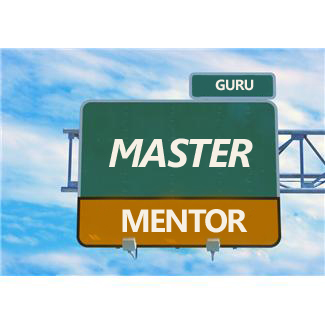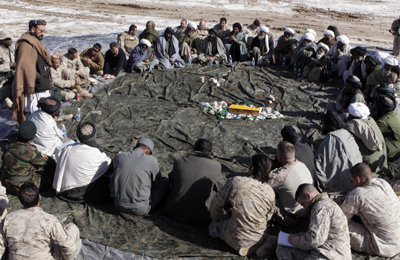Habits In Medical Care, Part Two: Pay That Bill!
HABITS IN MEDICAL CARE, PART TWO: PAY THAT BILL! (ISSUE 83)
By Diane Gold
 When we go to a medical professional for wellness or sickness services, we start to build habits. We learn that it is important to trust the doctor with both the body and the mind, or that’s how it was in the 1960s when I was young. We were taught we had to trust this person of medicine to care about us and that we could talk to them about anything that bothered us, even emotional issues.
When we go to a medical professional for wellness or sickness services, we start to build habits. We learn that it is important to trust the doctor with both the body and the mind, or that’s how it was in the 1960s when I was young. We were taught we had to trust this person of medicine to care about us and that we could talk to them about anything that bothered us, even emotional issues.
So, in adulthood, we find a doctor or several that we believe can provide competent service, adequate face time with us, where s/he doesn’t seem bored out of her mind and where our appointment time is respected, meaning we only wait 50 minutes for our doctor instead of 90 minutes, which we have waited at the other offices and, finally, if we have medical insurance, a professional who is in our network to keep the bill down. And we call this a good choice of doctors and a great visit, more or less.
 Note that I am using the term doctor to mean the individual each of us has chosen to be our primary health care provider. Personally, I’m still looking.
Note that I am using the term doctor to mean the individual each of us has chosen to be our primary health care provider. Personally, I’m still looking.
We will speak about the billing habit that we are taught from an early age: the bill comes and we have to pay it. So we’ve had lots of practice at believing in the medical bill.
THE BILL FOR MEDICAL SERVICES
When the bill comes, we have watched our parents pay it, and we have even paid it ourselves on more than one occasion. So, what do we do? We pay it.
I have a story that reminds me of how our habit of paying whatever bill comes in because doctor’s offices are trustworthy and would never cheat a patient can end up costing people extra money.
MY LATEST STORY
In the world of technology, it is important to change the habit of just going along. So, here’s my story.
I went to an emergency room to see if I broke a bone after slipping on cat regurgitation that blended in well with the floor. Although I pay an exorbitant amount for health insurance, I was pretty sure I wasn’t covered for the emergency room. But I needed to go because it was an emergency. So, I went.
I had X-rays taken, waited hours for a radiologist to read them and had an ER doctor report I was only bruised. Funny how that turned out to be 2 doctor bills.

I figured $2,000, easy. The next day, after resting, I decided to call Blue Cross, the insurance company to see how much I actually had to pay. I was told I had no co-pay and no charge for the emergency room to which I jumped with glee.
So, I had one recorded phone call where the rep stated I would not have to pay anything but the doctors’ bill.
 Next I received an invoice for $466. This was quite different from the $00.00 I had been told I would have to pay.
Next I received an invoice for $466. This was quite different from the $00.00 I had been told I would have to pay.
So I called another agent and explained that I had already been told there would be no medical bill, only a doctor’s fee. So, what was the bill for?
The agent put me on hold and researched my insurance policy. He was happy to say that I would not have to pay a co-pay, and that my emergency visit facility charge would be paid for. He said he was going to have the correct department adjust the invoice to $00.00.
The following day, I decided to call and speak with a supervisor since I was not satisfied with having to wait 30 days. Again, I had a regular rep and a supervisor tell me, each, on her/his own, that there would be no payment necessary for the facility I had gone to. And that they would expedite the process of removing the charge.
Later that day, I got a call from the agent I called after receiving the invoice. He said he had found that all agents had misinformed me and that I would have to pay the bill.
At this time, I began thinking about people who pay blindly because they trust the medical team, or because they believe they have no voice to speak up. I wondered how many people pay an incorrect bill just because it was sent? And how much extra money do doctors and hospitals receive just because people don’t have the confidence to inquire?
People don’t want their credit scores ruined. So they pay no matter what. It’s sad. And one disgraceful thing on the part of the health insurance provider is that, “The written terms of your contract always prevail.” This, in essence, means whatever a rep says is not backed by the company. The only thing that is valid is the words in the insurance contract.
CONCLUSION
The habit we learn is if an invoice has been mailed out, it must be right. So pay it! This is false thinking and we need to check with our provider before paying any unknown amount.
ACTION STEP
 There is only one step:
There is only one step:
SPEAK OUT by asking five questions:
1) What is my co-pay?
2) What is my out-of-pocket amount?
3) What do I end up paying for this service?
4) How many doctor bills will I get separately?
5) If the information you provide is incorrect, will your company back you on the information you give?
The set of questions is crucial. As you see, I asked them and got four incorrect responses. I will appeal the bill because of all the wrong information. However, from my experience and looking at the insurance provider’s failsafe quote about “only the written terms prevail,” the provider will deny the appeal, and the patient (I, in this case) will pay in the end.
Unless we object to a policy where a company does not stand by its employees words, it will not change. So, speak out! And good luck recognizing this and other habits in medical care.
____________________________________________________________________
FEEDBACK
Please leave a comment and LIKE.
DIANE GOLD, AUTHOR
Diane Gold, Founder of Warriors of Weight, Turning Habits Into Health, is a mentor in tai chi, kung fu and meditation, a music, fitness and stress expert, dedicated mom, studying plant-based nutrition.
She considers how corporate customer service affects the average person. She says,
“Since most often, our habits are working; it is to our advantage to notice them. There are so many ways we have been trained to be, so many things we blindly accept.
“We should keep a notebook of the habits we see. If they support the way we want to live, they are good habits. If they hinder us, it’s time to make an adjustment. We decide, once we are aware. So, take note, and choose what works.”

 An MIT study last October at the McGovern Institute For Brain Research, authored by Kyle Smith, Ann Graybiel, et al, showed how rats continued their learned habitual behavior even when their reward was removed.
An MIT study last October at the McGovern Institute For Brain Research, authored by Kyle Smith, Ann Graybiel, et al, showed how rats continued their learned habitual behavior even when their reward was removed. Often times, we put tremendous value on what we do. If we write, we believe our writing helps the readership. If we compose, we are enamored with our own work. If we teach, we think we are the best. If we are fighters, we believe we are the best.
Often times, we put tremendous value on what we do. If we write, we believe our writing helps the readership. If we compose, we are enamored with our own work. If we teach, we think we are the best. If we are fighters, we believe we are the best. 2) PASSING JUDGMENT
2) PASSING JUDGMENT In order for these action steps to take shape, we must repeat them over and over, each time we have the opportunity. The idea is to change the habit of inflexible mind we have instilled in ourselves, and instill a new one, the habit of flexible mind. It requires self-mind training, as with any habit!
In order for these action steps to take shape, we must repeat them over and over, each time we have the opportunity. The idea is to change the habit of inflexible mind we have instilled in ourselves, and instill a new one, the habit of flexible mind. It requires self-mind training, as with any habit! Have a question about a habit, nutrition, plant-based nutrition, tai chi, music, parenting, life? Ask here and, if we don’t know the answer, we will ask our qualified panelists and professional colleagues to help get you your answer.
Have a question about a habit, nutrition, plant-based nutrition, tai chi, music, parenting, life? Ask here and, if we don’t know the answer, we will ask our qualified panelists and professional colleagues to help get you your answer. One truth is this: the more times we do any behavior; the less offensive it becomes to us, the more we think it supports our positive lifestyle, the less foreign it becomes, the poorer our judgment becomes about the behavior and the easier it is to keep doing it.
One truth is this: the more times we do any behavior; the less offensive it becomes to us, the more we think it supports our positive lifestyle, the less foreign it becomes, the poorer our judgment becomes about the behavior and the easier it is to keep doing it.


 We understand that when people say, “Oh, why don’t you just have one,” when speaking about any consumables whose “one” would trigger a series of unhealthy behaviors; it is we who choose our actions. The Greek aphorism “Know Thyself” comes into play; if we have the control to consume “one,” great. If having “one” will trigger having 100 after that, we choose and smile about it. Usually, the “one” act leads to 5,000 more of that “one” action, so the decision to abstain is preferable.
We understand that when people say, “Oh, why don’t you just have one,” when speaking about any consumables whose “one” would trigger a series of unhealthy behaviors; it is we who choose our actions. The Greek aphorism “Know Thyself” comes into play; if we have the control to consume “one,” great. If having “one” will trigger having 100 after that, we choose and smile about it. Usually, the “one” act leads to 5,000 more of that “one” action, so the decision to abstain is preferable.
 When our children come home cursing, speak hurtfully about others, prefer greed to sharing, tell half truths instead of trusting us, and don’t consider that knowledge is freedom; we had better look in the mirror and do something now.
When our children come home cursing, speak hurtfully about others, prefer greed to sharing, tell half truths instead of trusting us, and don’t consider that knowledge is freedom; we had better look in the mirror and do something now. There is nothing more important than engaging with our children. How secure they feel can be based upon a simple genuine interaction on our part. That moment we listened even though we had other responsibilities could have made the difference between the apathetic student and the person who thrives.
There is nothing more important than engaging with our children. How secure they feel can be based upon a simple genuine interaction on our part. That moment we listened even though we had other responsibilities could have made the difference between the apathetic student and the person who thrives. 6)
6)
 The grade game refers to the habit of using grades to determine success in education. This measurement system is known all over the world. How often does it work?
The grade game refers to the habit of using grades to determine success in education. This measurement system is known all over the world. How often does it work? I read an article by Michael Thomsen, “The Case Against Grades,” at Slate.com the other day. In it, he supports the trend moving away from grades in school. He talks about the “negative reinforcement” that comes from this type of system. Having been a specialty teacher for 10 years in the New York City and State School Systems, and a private teacher for another several decades, I have first-hand experience at watching students and serving their differences.
I read an article by Michael Thomsen, “The Case Against Grades,” at Slate.com the other day. In it, he supports the trend moving away from grades in school. He talks about the “negative reinforcement” that comes from this type of system. Having been a specialty teacher for 10 years in the New York City and State School Systems, and a private teacher for another several decades, I have first-hand experience at watching students and serving their differences. 1) Children cut school for fear of failing a test.
1) Children cut school for fear of failing a test.
 Placing children in a molded system that does not embellish their interests and their strengths represses their creativity, curbs their intelligence, crushes their self-worth and perpetuates a system that needs change. Having a system that is evolutionary in nature and is not framed around “the grading game” seems fresh, logical, sensible and
Placing children in a molded system that does not embellish their interests and their strengths represses their creativity, curbs their intelligence, crushes their self-worth and perpetuates a system that needs change. Having a system that is evolutionary in nature and is not framed around “the grading game” seems fresh, logical, sensible and
 In 2013, these words of distinction are similar to the word, “natural” in the early 1980s. The word “natural,” according to the FTC (Federal Trade Commission) is a generic word that misleads and misrepresents. It can refer to anything that is minimally processed and not manufactured. It can be animal, plant and made from a substance that is naturally occurring in the earth such as petroleum. So its original intent is worthless. The words guru, master and mentor seem to be going in the same nebulous or altered direction.
In 2013, these words of distinction are similar to the word, “natural” in the early 1980s. The word “natural,” according to the FTC (Federal Trade Commission) is a generic word that misleads and misrepresents. It can refer to anything that is minimally processed and not manufactured. It can be animal, plant and made from a substance that is naturally occurring in the earth such as petroleum. So its original intent is worthless. The words guru, master and mentor seem to be going in the same nebulous or altered direction. It must have been in the 1980s when I was charging $40 to give a one-hour piano lesson. I had been paying $80 for the best teachers on the planet, Norman Gold and Sanford Gold (no direct ancestral relation to me or each other). And THE ever-popular, all-in-one New York music store offered the same duration piano lessons for $12 a pop.
It must have been in the 1980s when I was charging $40 to give a one-hour piano lesson. I had been paying $80 for the best teachers on the planet, Norman Gold and Sanford Gold (no direct ancestral relation to me or each other). And THE ever-popular, all-in-one New York music store offered the same duration piano lessons for $12 a pop. Next, from 1995 to the present, I’ve been in the martial arts business. And the same thing has happened. Throughout my martial arts career, I have seen people who trained for a year or two or people who trained for three months and won one tournament, open a school and hang a sign that said “Master Smith’s Martial Arts.” I have also experienced teachers along the way who were called “master” but did not possess the honesty, integrity, knowledge, skills or humanity to hold the title.
Next, from 1995 to the present, I’ve been in the martial arts business. And the same thing has happened. Throughout my martial arts career, I have seen people who trained for a year or two or people who trained for three months and won one tournament, open a school and hang a sign that said “Master Smith’s Martial Arts.” I have also experienced teachers along the way who were called “master” but did not possess the honesty, integrity, knowledge, skills or humanity to hold the title.
 It is not common knowledge that the black belt in martial arts is a symbol of a dedicated student who, if very conscientious, has learned no more than 10% of her subject. All over the world, though, because we can acquire testing fees and sell uniforms to go with new belts, this very fact is rarely emphasized or understood.
It is not common knowledge that the black belt in martial arts is a symbol of a dedicated student who, if very conscientious, has learned no more than 10% of her subject. All over the world, though, because we can acquire testing fees and sell uniforms to go with new belts, this very fact is rarely emphasized or understood.




 1) Bereaved people from opposing sides of a conflict share their story, 1 at a time, with the whole group. (Image depicts a generic group.)
1) Bereaved people from opposing sides of a conflict share their story, 1 at a time, with the whole group. (Image depicts a generic group.) CATHARSIS
CATHARSIS

 Now, I don’t believe that blame is something helpful, but I do believe that, because women have accepted the position of inferiority, they have perpetuated a myth that carries on to this day. I also believe that, if women who are oppressed fight for their own equality (I am not speaking of the gentle oppressions where women make less money, have more domestic responsibilities, get worse jobs, but of stark, horrific oppression such as domestic slavery, sex slavery, trafficking, second class citizenship that exist in many nations), the fight would cause as many female deaths as in any civil war to date.
Now, I don’t believe that blame is something helpful, but I do believe that, because women have accepted the position of inferiority, they have perpetuated a myth that carries on to this day. I also believe that, if women who are oppressed fight for their own equality (I am not speaking of the gentle oppressions where women make less money, have more domestic responsibilities, get worse jobs, but of stark, horrific oppression such as domestic slavery, sex slavery, trafficking, second class citizenship that exist in many nations), the fight would cause as many female deaths as in any civil war to date. There are women who are born into prostitution. In certain sections of the world, 3 generations of women can be found to be prostitutes. In the red light district of Kolkata (formerly spelled Calcutta), a prevalent family business is this: the mother is a prostitute as is her mother. The father waits for the female children of his wife to become 10 years old (or worse, 7 years old) so that he can turn them out into prostitution so that the family can eat and live.
There are women who are born into prostitution. In certain sections of the world, 3 generations of women can be found to be prostitutes. In the red light district of Kolkata (formerly spelled Calcutta), a prevalent family business is this: the mother is a prostitute as is her mother. The father waits for the female children of his wife to become 10 years old (or worse, 7 years old) so that he can turn them out into prostitution so that the family can eat and live. Accepting the thinking that it’s OK to putting children into prostitution for money is a bad habit. It is also a way of thinking and acting that has been accepted in current and past society as normal.
Accepting the thinking that it’s OK to putting children into prostitution for money is a bad habit. It is also a way of thinking and acting that has been accepted in current and past society as normal. In certain cultures, women are forced into being one of many wives, forced into being consorts, forced into the life of a sex slave, a baby machine or a maid. This is partly the fault of women who accept this. But their alternative would be death, ostracism or, at least, fear of death and disfigurement.
In certain cultures, women are forced into being one of many wives, forced into being consorts, forced into the life of a sex slave, a baby machine or a maid. This is partly the fault of women who accept this. But their alternative would be death, ostracism or, at least, fear of death and disfigurement. It is time we worked on changing the concept and reality of women as slaves. It is time we all became better human beings. It’s crucial to engage in conversations. It is also important to consistently talk about abuse of women in literature and in every country in the world.
It is time we worked on changing the concept and reality of women as slaves. It is time we all became better human beings. It’s crucial to engage in conversations. It is also important to consistently talk about abuse of women in literature and in every country in the world. Because of this training, we have the ability to consider taking the longer path if it is more strategic to get where we are going because we know patience, the first lesson in any martial art. We learn to take time out to consider, meditate, evaluate, even if, in physical combat, it is only a split second.
Because of this training, we have the ability to consider taking the longer path if it is more strategic to get where we are going because we know patience, the first lesson in any martial art. We learn to take time out to consider, meditate, evaluate, even if, in physical combat, it is only a split second. To the kung fu artist or other martial artist, there is no sense in acting with impatience, hostility, irrationality unless the behaviors of the other affect us. If our self-esteem is intact and does not depend upon how others see us or treat us, we have no need to pump ourselves up like peacocks on display being macho to find a mate or bearded dragon lizards who puff their necks to make themselves bigger when they sense a threat.
To the kung fu artist or other martial artist, there is no sense in acting with impatience, hostility, irrationality unless the behaviors of the other affect us. If our self-esteem is intact and does not depend upon how others see us or treat us, we have no need to pump ourselves up like peacocks on display being macho to find a mate or bearded dragon lizards who puff their necks to make themselves bigger when they sense a threat. When we are older, acting the way of the child does not utilize our reason and the wisdom from our experience we have taken so long to gain.
When we are older, acting the way of the child does not utilize our reason and the wisdom from our experience we have taken so long to gain. CONCLUSION
CONCLUSION
 The gender issue is alive and well all over the world. There are many sides to it and hurdles we can turn to our advantage. I just read in Wikipedia,
The gender issue is alive and well all over the world. There are many sides to it and hurdles we can turn to our advantage. I just read in Wikipedia, As a direct result of our having been deemed the weaker sex in the past, women may act with cold, ruthless and inflexible behaviors. If we react because of a perceived vulnerable reputation, we’re living someone else’s perception. If we become strong, capable achievers, we will change old thinking. As the decades pass.
As a direct result of our having been deemed the weaker sex in the past, women may act with cold, ruthless and inflexible behaviors. If we react because of a perceived vulnerable reputation, we’re living someone else’s perception. If we become strong, capable achievers, we will change old thinking. As the decades pass. Because our families may have bought into the gender issue; we women may not have learned boxing, martial arts, how to stand up for our physical selves. We may be walking around lacking personal protection training with that shaky inner feeling of slight anxiety. This emotion is not gender specific, although many favor the old gender specific attitudes; this insecurity shows up in anyone who has not been trained in strength training, meditation and some type of combat. A big oversight in our school and parenting systems leaves this out. This deprivation of training causes much stress that exists in anyone who has ever been confronted by a bully, a demanding significant other or an authority figure.
Because our families may have bought into the gender issue; we women may not have learned boxing, martial arts, how to stand up for our physical selves. We may be walking around lacking personal protection training with that shaky inner feeling of slight anxiety. This emotion is not gender specific, although many favor the old gender specific attitudes; this insecurity shows up in anyone who has not been trained in strength training, meditation and some type of combat. A big oversight in our school and parenting systems leaves this out. This deprivation of training causes much stress that exists in anyone who has ever been confronted by a bully, a demanding significant other or an authority figure. It is most appropriate for every one of us to learn how to protect ourselves: girl, boy, woman, man. As they say, knowledge is power. When we are well trained, we doubt ourselves less, maintain awareness of what’s around the corner and are more prepared to interpret and successfully meet physical contact and body language of others.
It is most appropriate for every one of us to learn how to protect ourselves: girl, boy, woman, man. As they say, knowledge is power. When we are well trained, we doubt ourselves less, maintain awareness of what’s around the corner and are more prepared to interpret and successfully meet physical contact and body language of others. One wonders why personal safety training has not been added to “the” required school curriculum beginning in elementary school. This type of training is basic to our ability to build a strong emotional and physical foundation. How could it be left out? It also tempers the spirit so that violence is met with temperance. Go figure.
One wonders why personal safety training has not been added to “the” required school curriculum beginning in elementary school. This type of training is basic to our ability to build a strong emotional and physical foundation. How could it be left out? It also tempers the spirit so that violence is met with temperance. Go figure. We are not objects to be gawked at dressing for the pleasure of others. We are brilliant beings who can choose the way we look and feel in a world we are involved in changing. If we choose to dress for others, that’s great. As long as it soothes, rather than inflames, our nature.
We are not objects to be gawked at dressing for the pleasure of others. We are brilliant beings who can choose the way we look and feel in a world we are involved in changing. If we choose to dress for others, that’s great. As long as it soothes, rather than inflames, our nature.
 7)
7) We remember the impressions from our childhood, the good, the bad, especially the ugly. There are many we haven’t even actualized into words. They form us, though.
We remember the impressions from our childhood, the good, the bad, especially the ugly. There are many we haven’t even actualized into words. They form us, though.





